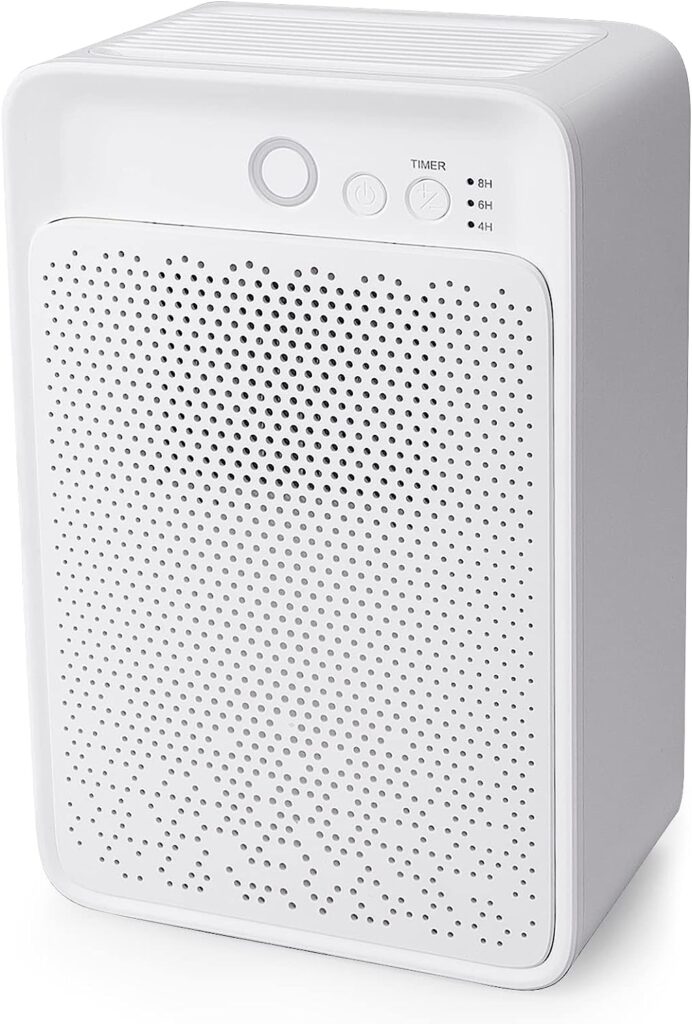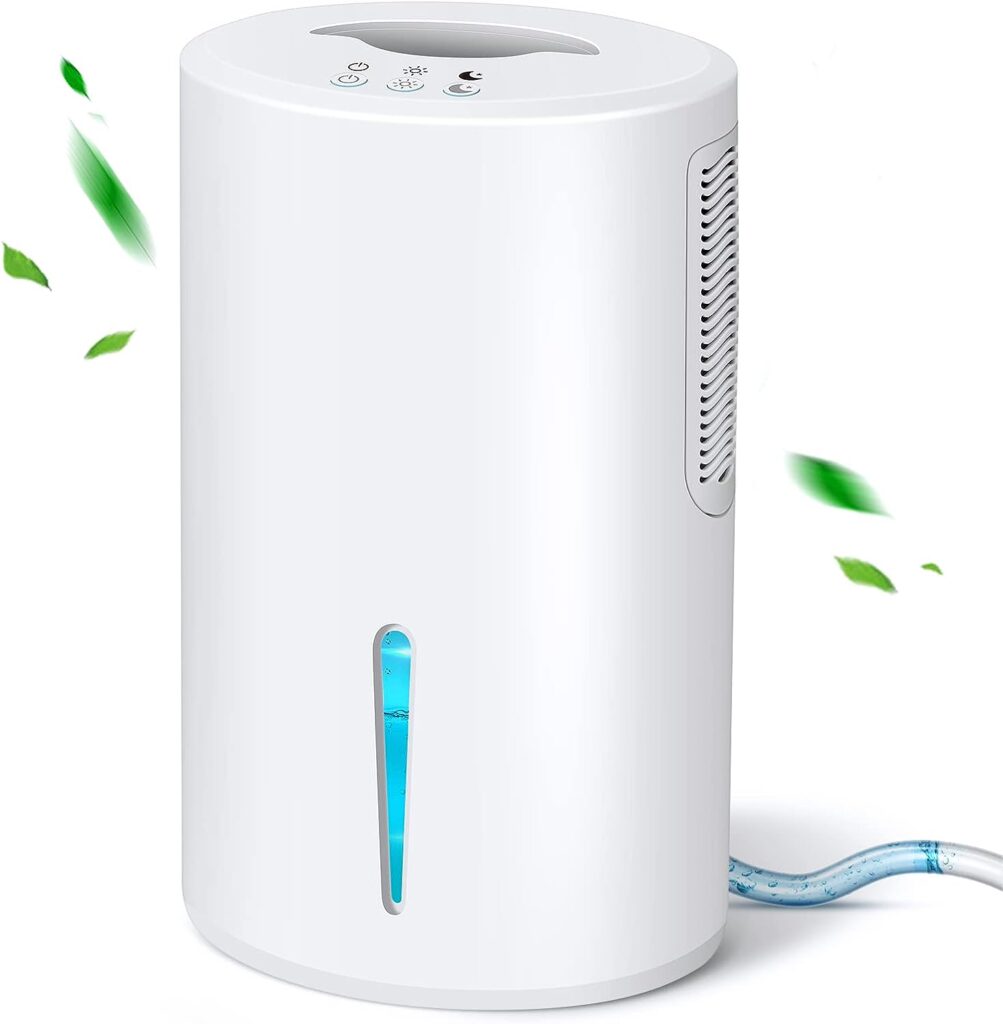Removing moisture from the air is a common phenomenon for the Dehumidifier. If your dehumidifier is blowing out cold air, there must be malfunctioning in its system.
Technically, the dehumidifier can’t cool an environment. Instead, it absorbs excess humidity, musty smell, and harmful elements from the environment.
Releasing the cool air instead of hot air might leave you tensed about the mal-functionality of the dehumidifier.
So, why is your dehumidifier blowing out cold air? Let’s unravel the icy mystery behind this common occurrence.
Our article involves the reasons for the malfunctioning and provides practical troubleshooting and prevention steps.
Do Dehumidifiers Release Cold or Hot Air
To comprehend the issue of cold air blowing from a dehumidifier, it’s essential to grasp its operation.
A dehumidifier is an appliance that helps maintain a comfortable indoor environment by reducing excess humidity.
Dehumidifiers primarily release cooler air, driven by a fascinating process. They draw in humid air, guiding it over cooling coils where moisture condenses into tiny droplets.
This condensation releases heat and cools the air in the process. Before that, the drier air is cleverly reheated to maintain a balanced room temperature.
However, the dehumidifiers may emit cooler air due to the cooling coils. But it ensures your comfort by effectively managing both humidity levels and room temperature.
It’s a harmonious interplay that contributes to a healthier, cozier indoor environment.
Why Is Your Dehumidifier Blowing Out Cold Air? – 3 Unrevealed Reasons
Clearly, something isn’t functioning properly, when the dehumidifier is blowing out the cold air. The dehumidifier isn’t supposed to blow out the cold air. Instead, it should release moisture from the surrounding air.
Understanding the root causes and taking appropriate actions can help restore the dehumidifier’s effectiveness. Here we figured out the reasons for “why is your dehumidifier blowing out cold air?”
Normal Operation During Cooling Cycle
One common reason your dehumidifier emits cold air is during its cooling cycle. When the humidity level is high, the unit enters a defrosting process to prevent frost buildup on the coils.
This temporary cooling cycle can lead to the perception of cold air blowing out.
Incorrect Settings or Mode Selection
Sometimes, the dehumidifier may be set to a mode that triggers cooling, such as the “Cool” or “Dry” mode. Incorrect settings can lead to the emission of cold air even when it’s not intended.
Malfunctioning Components
Several malfunctioning components could contribute to the issue of cold air emission:
Faulty Thermostat
A malfunctioning thermostat might inaccurately sense the temperature. It causes the dehumidifier to engage in unnecessary cooling cycles.
Defective Compressor
A malfunctioning compressor can affect the overall operation of the unit, leading to irregular cooling cycles and cold air discharge.
Damaged or Clogged Coils
Coils that are damaged or clogged can disrupt the heat exchange process, resulting in the release of cold air.

Troubleshooting Steps for Fixing the Dehumidifier Is Malfunctioning
A malfunctioning dehumidifier can disrupt the comfort and quality of your indoor environment. By identifying the root causes of the malfunctioning, you can restore and maintain your dehumidifier.
You already got it, why is your dehumidifier blowing out cold air? Here we outlined the series of troubleshooting steps to restore the malfunctioning dehumidifiers.
Checking the Settings
Begin by reviewing and adjusting the settings on your dehumidifier. Ensure that you’re using the appropriate operating mode and that the humidity settings are configured correctly for your comfort and needs.
Inspecting for Frost or Ice Buildup
If your dehumidifier is equipped with a defrosting cycle, understand how it operates. Inspect the unit for excessive frost or ice buildup on the coils. If frost is present, allow the unit to undergo a defrosting cycle.
Ensuring Proper Airflow
Make sure the dehumidifier is placed in a location that allows proper airflow around the unit.
Cleaning
Regular cleaning your dehumidifier is crucial to ensure its efficient operation and prolong its lifespan. So, how do you clean your dehumidifier to fix its malfunctioning of cold air emission? Let’s guide you step by step.
Step 1: Unplug and Power Off Before performing any maintenance or cleaning, ensure the dehumidifier is unplugged and turned off to guarantee your safety.
Step 2: Empty the Water Tank If your dehumidifier has a water collection tank, carefully remove it and empty any collected water. Clean the tank with mild soap and water, rinse thoroughly, and allow it to dry completely.
Step 3: Clean the Air Filter Remove and clean the air filter according to the manufacturer’s instructions. Wash the filter with lukewarm water and mild detergent, or vacuum it gently to remove dirt and debris. Allow the filter to dry completely before reinserting it.
Step 4: Wipe Down Exterior Surfaces Using a damp cloth, wipe down the exterior of the dehumidifier to remove dust, dirt, and grime. Pay attention to vents and louvers where air enters and exits.
Step 5: Clean the Coils If your dehumidifier has visible coils, gently brush or vacuum them to remove dust and dirt buildup. Avoid bending or damaging the coils during this process.
Step 6: Check the Drainage System Inspect the drainage system for any clogs or blockages. Clean the drain pan and drainage tube if necessary to ensure proper water flow.
Step 7: Inspect the Humidistat and Controls Check the humidistat and control panel for dust or dirt accumulation. Wipe them clean and ensure they are functioning correctly.
Step 8: Reassemble and Test Once all components are clean and dry, reassemble the dehumidifier. Plug it in, power it on, and test its operation. Monitor the humidity levels and listen for any unusual noises.

How to Prevent the Problems of Dehumidifier’s Cold Air Discharge
Preventing issues with a dehumidifier’s air blowing out cold air involves proactive measures to ensure its optimal functionality.
By implementing proper maintenance, suitable settings, and prudent usage, you can minimize the occurrence of such problems.
This guide outlines key preventive steps to help you avoid issues related to cold air discharge.
Regular Cleaning: Maintain a routine cleaning schedule for your dehumidifier. Clean or replace the air filter as recommended by the manufacturer to ensure proper airflow and prevent frost buildup on coils.
Proper Placement: Place the dehumidifier in a well-ventilated area, away from walls and obstructions. Proper airflow helps prevent frost accumulation and inefficient operation.
Humidistat Settings: Set the humidistat to an appropriate level. Avoid setting it too low, as it may cause the dehumidifier to overwork and blow out colder air.
Temperature Consideration: Use the dehumidifier in a room with a temperature above 65°F (18°C). Lower temperatures can lead to frost forming on the coils and cold air blowing out.
Defrost Mechanism: Ensure that your dehumidifier has a functional automatic defrost mechanism. This prevents excessive frost buildup on the coils.
Room Insulation: Properly insulate your home to minimize temperature differences between the dehumidified air and the surroundings, reducing the likelihood of cold air blowing out.
Drainage System: Regularly inspect and clean the drainage system to prevent clogs and ensure smooth water removal.
Maintenance Schedule: Create a maintenance calendar, including tasks such as filter cleaning, coil inspection, and drainage system checks.
Manufacturer Guidelines: Always follow the manufacturer’s instructions for maintenance, operation, and troubleshooting.
Professional Check-ups: Periodically have your dehumidifier inspected by a professional technician to identify and address any potential issues before they escalate.
Proper Storage During Off-Seasons: When storing your dehumidifier during off-seasons, ensure it is clean and dry. Store it in a cool, dry place to prevent the growth of mold and mildew.
FAQs
Yes, dehumidifiers release cold air as a result of the cooling process that removes moisture from the air. This is a normal operation and helps in reducing humidity levels within the room.
Yes, you can leave a dehumidifier on all night. Most modern dehumidifiers have safety features and energy-saving modes, making them suitable for continuous operation.
However, it’s advisable to follow the manufacturer’s guidelines and ensure proper ventilation in the room.
Yes, a dehumidifier can make a room dry by removing excess moisture from the air. It reduces humidity levels, which helps prevent mold growth, musty odors, and other issues associated with damp environments.
A dehumidifier typically takes between 24 and 72 hours to effectively dry a room, depending on factors such as room size, humidity levels, and dehumidifier capacity.
Larger rooms with higher humidity levels may take longer, while smaller spaces with moderate humidity could achieve desired results within 24 hours.
On average, a home dehumidifier is designed to collect about five gallons of water per day. This amount can vary based on factors like humidity levels, room size, and the dehumidifier’s capacity.
Dehumidifiers are less effective in colder weather, typically below 65°F (18°C), as they can potentially freeze up and become less efficient. It’s advisable to use them in warmer temperatures for optimal performance.
Final Words
Ineffective operation, the dehumidifier doesn’t blow out cold water. So, why is your dehumidifier blowing out cold air?
Your dehumidifier blows out cold air due to its cooling process. This mechanism removes humidity from the air, leading to condensation and the release of colder, drier air.
It’s a normal function that aids in maintaining comfortable indoor humidity levels.

